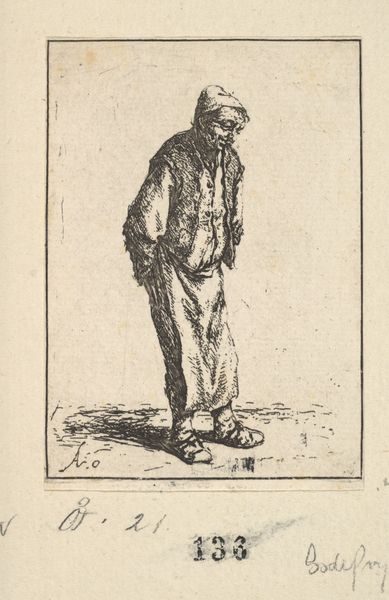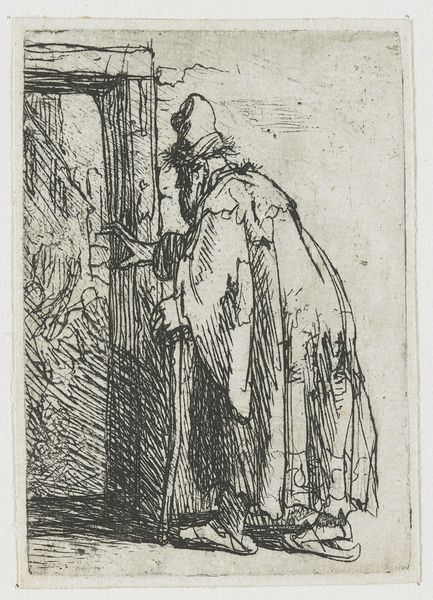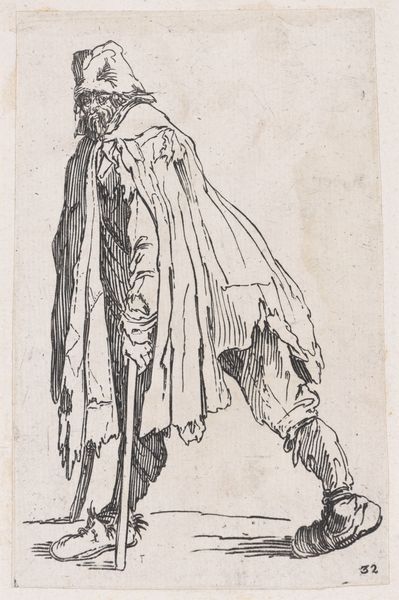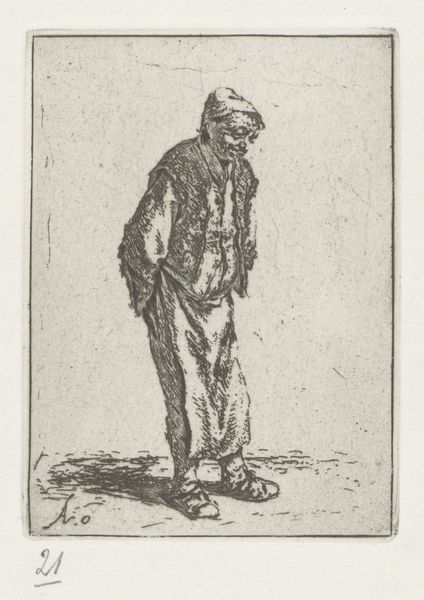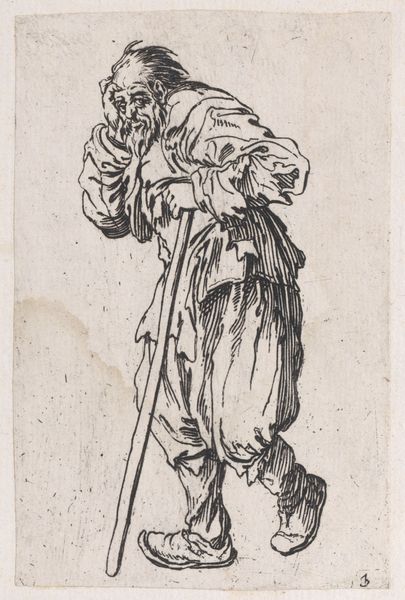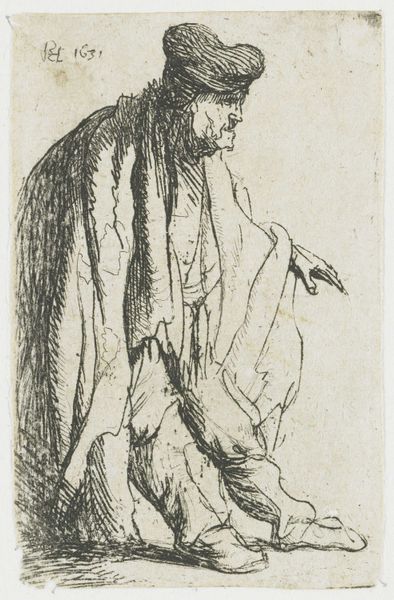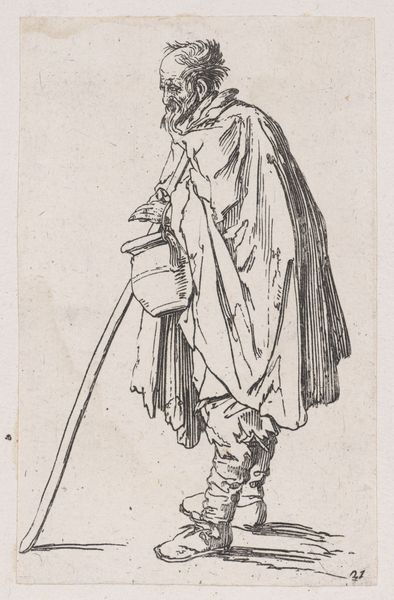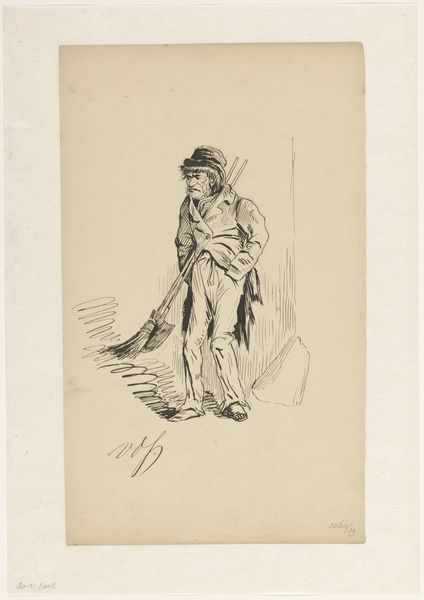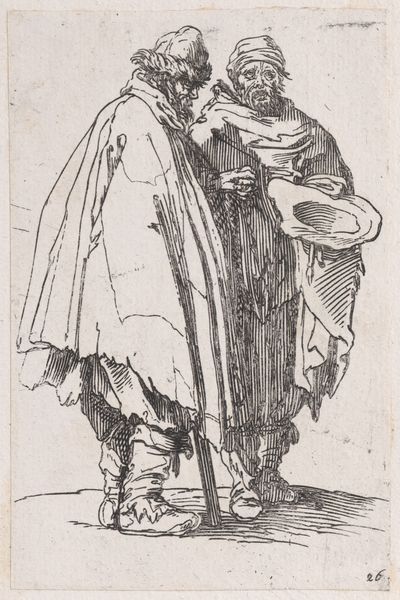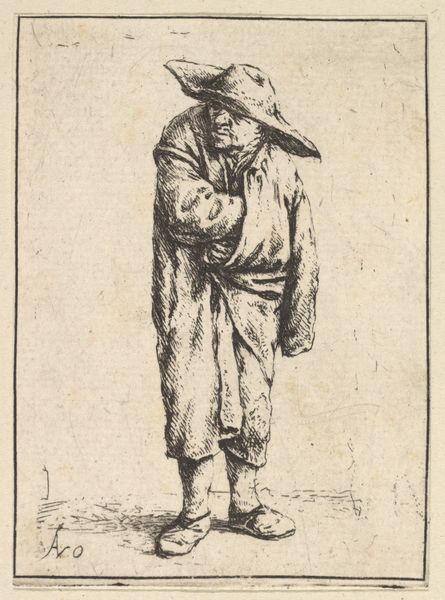
drawing, etching, ink
#
portrait
#
drawing
#
baroque
#
etching
#
figuration
#
ink
Copyright: Public domain
Rembrandt van Rijn etched "The Leper" around 1631, presenting us with a study in stark contrasts and textural complexity. The etching's composition is dominated by the figure's draped form, rendered with a mix of dense, cross-hatched lines and lighter, more open areas. This creates a visual push and pull, drawing our eye across the surface of the print. The leper's attire, a series of folds and textures, signifies both his social marginalization and the physical decay associated with his condition. Note how Rembrandt uses line to define shape and also to convey depth, particularly in the shadowed areas around the figure's feet and face. Rembrandt, through his manipulation of light and shadow, invites us to consider the socio-cultural context of the time, where disease was not merely a medical condition but also a marker of social and moral status. The figure's posture, bent and offering his hand, speaks to a complex negotiation of power and vulnerability. This etching serves not only as an aesthetic object but also as a mirror reflecting broader philosophical inquiries into the human condition. It reminds us that art is not confined to beauty, but it is a medium for grappling with the profound and often uncomfortable aspects of existence.
Comments
No comments
Be the first to comment and join the conversation on the ultimate creative platform.

